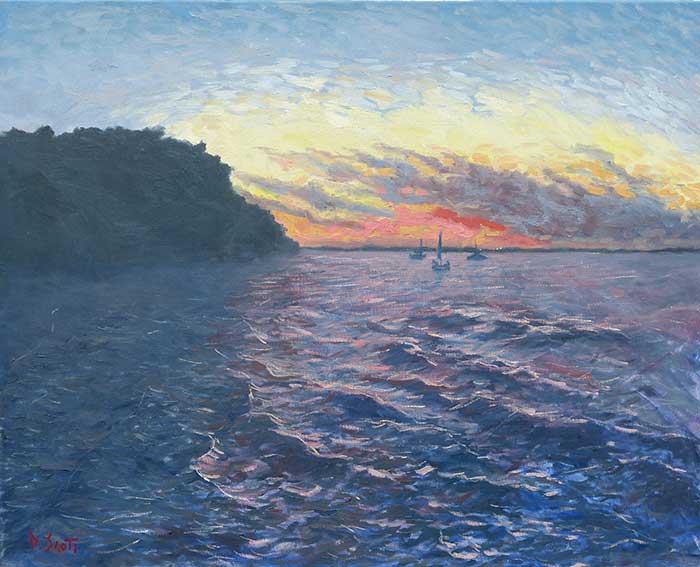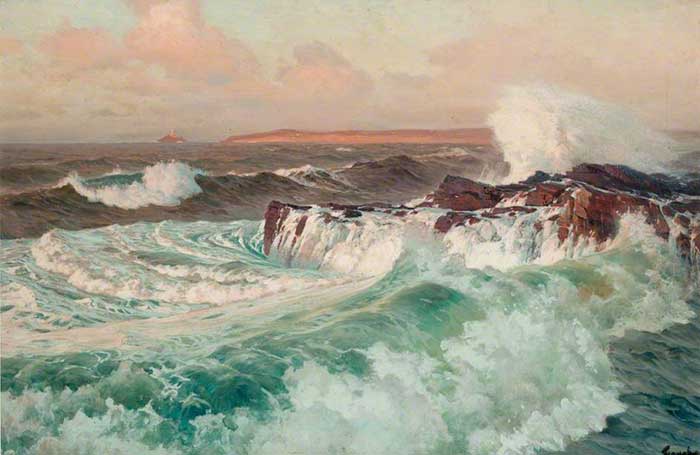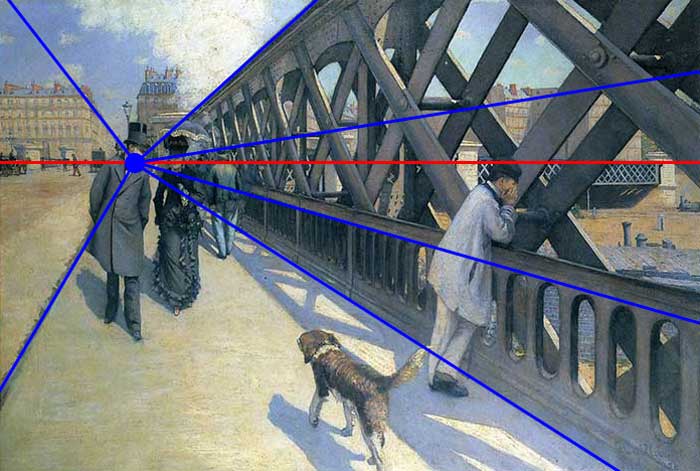These Are the Building Blocks or Main Things an Artist Uses to Create Art
Thefundamentals of fine art are what I consider to be the building blocks of an artwork. They are color, composition, value, form, brushwork, and perspective.
The fundamentals are more often than not universal across dissimilar mediums and styles. Learning them will help you become a well-rounded and versatile artist.
Color
I like to break color into two parts: color theory and color mixing and application. Successful use of color in painting requires a thorough agreement of both.
Color theory refers to the body of principles which address how we see color and what it is.
The theory is much easier to embrace by breaking color into its 3 individual elements, being hue, saturation, and value.
Hue: Where the color is located on the colour wheel. Scarlet, blue, yellow, light-green: these are different hues.
Saturation: How brilliant or rich a colour is. A color which is highly saturated is vivid. A low saturation color is weak and shut to gray.
Value: How light or night a color is, on a scale of white to black. Loftier-value colors are lite and low-value colors are dark.
Color mixing and application is all most taking what nosotros know nearly color and effectively translating that into our paintings.
Almost of this comes down to feel and fourth dimension spent on the canvas. Color mixing exercises and creating small-scale colour studies (like the ones below) are besides incredibly valuable for training your utilise of color.

Dan Scott, Color Studies, 2018
You tin learn more in my Color Guide.
Composition
Composition broadly refers to how well all the visual elements work together in an artwork. The visual elements are the building blocks of artwork and comprise of line, shape, color, value, space, form, and texture.
A well-designed limerick will be inviting and convey the big idea of the artist. Everything will just await like information technology fits.
Limerick is often discussed in clan with the principles of art, which are a set of criteria which are used to explain how the visual elements are arranged in a work of fine art. They incorporate of pattern, balance, emphasis, contrast, harmony, diversity, movement, proportion, and scale.
Some other concepts which can assist with your compositions are:
Rule of Thirds: A technique which involves segmenting the composition by thirds both horizontally and vertically. The intersections are considered to be aesthetically pleasing areas to position focal points. The rule of thirds tin can also be used to ensure your limerick is not overly symmetrical.
In the cuteOphelia by John Everett Millais, notice how key features of the painting are positioned around the intersecting lines, in particular, the female subject'due south face.

John Everett Millais, Ophelia, 1851–1852
Simplification: Much of art and composition is nearly taking what nosotros see and simplifying information technology into something clear and concise on the canvas. It is about simplifying the "noise".
In John Singer Sargent'sVenice in the Fog, notice how much of the detail has been simplified. The people and boats are depicted with nothing but a few dark color shapes; the buildings in the background are faint and bones; the water and sky are only sparse washes of color.

John Singer Sargent, Venice in the Fog, 1882
Dominion of Odds: The thought that objects in odd numbers tin appear more than naturalistic than objects in even numbers. This influenced my decision to take 3 boats in the painting below, rather than just two.

Dan Scott, 3 Boats at Kingfisher Bay, 2016
You lot tin can larn more in my Composition Guide.
Value
Value refers to how light or dark a color is. It is one of three elements of a color (the other two being hue and saturation), but it is usually considered every bit a separate fundamental surface area due to its importance to the structure and appeal of an artwork.
Painting with accurate values tin go a long style in giving your art a quality of realism, even if your brushwork is loose. Have Sir Arthur Streeton'south painting below for example. If you lot look closely, you lot will discover that Streeton did not carefully return every detail. His brushwork was loose and fluent. Just, despite this, in that location is a wonderful sense of realism about the painting. Y'all really get a feel for the dry Australian mural. That is because Streeton had a remarkable eye for value.

Arthur Streeton, Golden Summertime, Eaglemont, 1889
You can come across all the different values in the grayscale image below. Annotation that the value relationships are more important than the private values. That is, how lite or dark one area is compared to the surrounding areas. Streeton painted in a loftier fundamental (painted with mostly low-cal colors), but all the value relationships are very accurate, giving his piece of work a strong quality of realism.

Y'all can learn more in my Value Guide.
Grade and Structure
Form and structure refer to the use of visual elements to convey three-dimensional objects on a apartment surface. This could exist done through methods such as shading, contrast or contour drawing.
Almost subjects can exist simplified downward to basic forms of spheres, boxes, and cylinders. Take the seascape painting below by Frederick Judd Waugh.

Frederick Judd Waugh, Seascape
The waves and rocks are actually just an arrangement of spheres, boxes, and cylinders.

Agreement the basic forms and structures which make up your subject field volition permit you to paint more disarming depictions. That is why many portrait artists dedicate and so much time to studying homo anatomy.
Brushwork

Claude Monet, Arch to the West from Etretat, 1883
How yous apply your castor and manipulate paint on the canvas can be a primal feature of your artwork. Much like the bold strokes in Vincent van Gogh'south work, or the fleeting dabs of color in Claude Monet'south work.
A general guideline I like to follow with my brushwork is to match the nature of my brushwork to the nature of the subject I am painting. For case, to paint rough, turbulent water, I would use rough, turbulent brushwork. For calm water, I would utilise calm, smooth brushwork.
I also like to utilize my brush to follow the contours of the subject. This helps reiterate the grade. Van Gogh did this in many of his paintings, similar his A Pair Of Leather Clogs below:

Vincent van Gogh, A Pair Of Leather Clogs, 1888
You can learn more than in my Brushwork Guide.
Perspective
Perspective in fine art refers to the depiction of a three-dimensional environment on a two-dimensional surface in a fashion that captures the relative size, position, and advent of objects. It is made up of two parts: linear perspective and aerial (or atmospheric) perspective.
Linear Perspective
Linear perspective is used past artists to determine the relative size, position, and shape of objects past using drawn or imagined lines which converge at a point on the horizon (vanishing point). When one vanishing point is used, that is chosen one-point perspective. When two vanishing points are used, that is called two-point perspective, and and then on.
Below are two examples of ane-point perspective in action:

Vincent van Gogh, Vincent's Bedroom In Arles, 1889 - One Point Perspective

Linear perspective is more important when painting rigid compages than information technology is for landscape painting. That is because mistakes in perspective tend to be more apparent when painting things similar buildings, houses, roads, paths, etc.
Aeriform (or Atmospheric) Perspective
Aeriform perspective is the effect of the atmosphere on the view of objects as they recede into the altitude. As an object recedes into the distance relative to the viewer, the contrast, value (darkness), color saturation and detail all fade.
When beginner painters inquire me to critique one of their paintings, one of the mutual problems is the distant elements of the painting (i.eastward. the distant mountains in a landscape) are painted with the same level of detail and colour as the rest of the painting. This gives an unnatural aerial perspective.
In many cases, the most "realistic" mountain you could pigment in the far distance may be nothing more than a uncomplicated, faint blue color shape. Cheque out the mountains in the distance of this painting by Monet:

Claude Monet, Juan-Les-Pins, 1888
Want to Acquire More?
You lot might be interested in my Painting Academy class. It covers the fundamentals of painting in depth. More details here if interested.
Thanks for Reading!
Thanks for taking the time to read this post. I appreciate information technology! Feel gratuitous to share with friends. If yous want more painting tips, check out my Painting Academy course.
Happy painting!

Dan Scott
Describe Paint Academy
Source: https://drawpaintacademy.com/fundamentals-of-art/